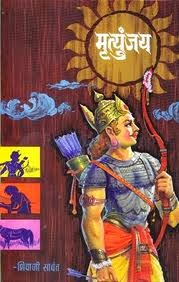In Memoriam: Guruvayur Kesavan
The temple town of Guruvayur in Thrissur district of Kerala is a storyteller’s delight. The town which is home to several popular legends smells of faith in every nook and corner and stands at an interesting crossroad where myths intersect with history. An integral part of temples in Kerala are its elephants. Elephants are loved, revered, groomed and accorded their importance in the colourful cultural life in Kerala, since most temples in the state rear their own elephants. Guruvayur has its own Aana Kottaram (an elephant palace) where 57 elephants are reared. Many of these elephants are often donated by devotees and the elephants are cared for by way of offerings received at the main Guruvayur temple.
 |
| The concrete statue of Kesavan standing tall |
A noble and kind elephant, he was known for bending his front legs only before those who would carry the Lord’s idol, to enable them to climb on him, while the others who held the royal umbrellas etc. had to climb on his back from his hind legs. His sincerity and devotion surprised many and it was due to his unwavering devotion that he was rewarded with the epithet: ‘Gajarajan’ (The Elephant King), which was prefixed to his name by the temple authorities in 1973. As he began ageing, Kesavan was tied 32 km away from the temple town of Guruvayur, he still managed to break free from the shackles and ran towards the temple to carry the Lord. It was during this elephant race when Kesavan came second in the elephant race. To cheer him up, they made him join the race but the adamant Kesavan bent forward graciously and carried the idol on his back. The will of the Gods revealed that Kesavan was the most favourite elephant of Lord Guruvayurappan.
‘Gajendra Moksham’ is an episode in the eighth chapter of the Srimad Bhagavatham which is narrated by Suka to Yudhisthira’s grandson, Parikshith. It revolves around the struggle of Gajendra, the elephant who was battling against a crocodile at a lake at the foothills of Trikuta ranges. The crocodile tries to drag the elephant into deeper waters while Gajendra is playing in the shallow recesses of the river. The battle between the crocodile and the elephant is said to have lasted a thousand years, during which the crocodile gains the upper hand over the elephant. Gajendra, at the end of his wits and strength, turns to pray to the Lord. The prayer of Gajendra is often used to symbolise the supremacy of complete surrender (sharanagati). Kesavan can be called as the Gajendra of Kaliyuga since he was blessed to be the Lord’s favourite elephant.
December 2, 1976 marked the auspicious Guruvayur Ekadashi. Kesavan was fasting that day and when the idol of the Lord was placed on his back, he began shivering and wabbled while walking, causing the idol to be placed on another elephant. Kesavan did a pradakshina around the temple and was taken to the temple compound where he lay with his trunk stretched towards the Lord, before he collapsed to the ground, 54 years after serving the Lord faithfully. His tusks can still be seen adorning the entrance of the main temple enclosure in Guruvayur. The unique tale of Kesavan shows that even in death, he commanded the adulation of all those who surrounded him.
 |
| The tusks of Kesavan at the entrance of the Guruvayur Temple |
It is often said that a human without bhakti is equal to dust and even bacteria with bhakti is equal to a Mahatma. In recognition of his service to the temple, the authorities commissioned a 12 feet concrete statue, which is located at the entrance of the Sreevalsom Guest House in the southern side of the temple. At 72, standing tall at 3.2 metres, Kesavan still continues to live in the hearts and memories of people who speak of him fondly. When devotees arrive at Guruvayur, they are reminded of his loyalty and devotion by way of his tusks which are placed at the entrance of the temple. Today being Guruvayur Ekadashi, I hope this post works as a fitting memorial to a unique devotee.
P.S.: The post has been written along with Shravanthi Premkumar


Comments